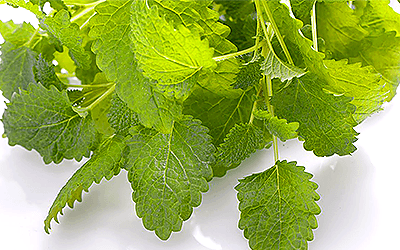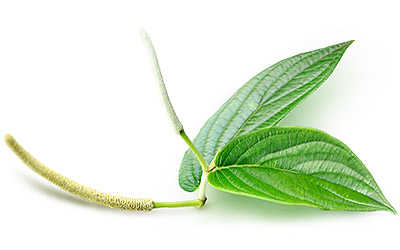The lemon balm plant, also known as melissa plant (among many other popular names), is an aromatic herb native to Europe that has been used by millennia for ritual, culinary, and medicinal purposes. Lemon balm was introduced in the Americas during the colonial era and its popularity for calming the nerves and inducing sleep, among other therapeutic uses, continues to this day.
Lemon Balm Medicinal Properties
- Medicinal action Antiviral, Anxiolytic, Sedative
- Key constituents Rosmarinic acid, caffeic acid, p-coumaric acid
- Ways to use Capsules, Hot infusions/tisanes, Liquid extracts, Tincture, Ointment, Essential oil
- Medicinal rating (3) Reasonably useful plant
- Safety ranking Safe
Health Benefits of Lemon Balm
While the lemon balm plant is traditionally valued for its anxiolytic and sedative properties, modern research also suggests that it holds antiviral effects, all of which potentially lend it to the following medicinal uses:
Treating herpes simplex infections. The lemon balm herb is commonly used to relieve cold sores. Its antiviral action inhibits the virus's replication.
Reducing stress and anxiety. Lemon balm's mechanism of action for easing anxiety is not yet fully understood, but it is often used in conjunction with other sedative herbs, namely valerian.
Relieving insomnia. Likewise, the lemon balm herb's sedative properties can be used to promote sleep.
In addition, the lemon balm plant is thought to interact with the antibodies involved in Graves' disease, reducing their effects. Thus, studies have suggested that lemon balm may be useful in the treatment of this form of hyperthyroidism.
How It Works
The lemon balm plant contains a unique and varied combination of polyphenolic compounds. Its high levels of caffeic acid, p-coumaric acid, and rosmarinic acid, are thought to be behind its antiviral and sedative properties. However, the exact mechanism of action of lemon balm is yet to be fully understood.
Similar antimicrobial properties can be found in blueberry, cranberry, and Oregon grape, whereas chamomile, linden, and valerian also exhibit sedative actions.
Lemon Balm Side Effects
Lemon balm is considered generally safe for oral and topical consumption, and its sedative effects are not intensified by alcohol. However, if ingested in excessive amounts, it may cause dependency and decrease alertness.
Lemon Balm Cautions
The lemon balm herb may interact with sedatives, thyroid medications, and HIV drugs, so those taking these medications should avoid lemon balm. As with all herbal supplements, it's important to consult with a physician before starting a regimen, especially for those who are pregnant or breastfeeding.
How to Consume Lemon Balm
- Edible parts Leaves
- Edible uses Flavoring
- Taste Sweet
The lemon balm herb appears in culinary preparations strictly as a flavoring, most often in beverages and dairy products. Even the small amount of lemon balm extract that flavors such products has been shown to reduce anxiety and improve concentration.
The most effective way of obtaining lemon balm's numerous health benefits is in medicinal forms of consumption, where its properties are more concentrated.
Lemon balm remedies are derived from the leaves of the lemon balm plant. They can be taken internally or externally, depending on the intended use.
Natural Forms
Infusion. Lemon balm tea is the most popular preparation for stress relief purposes, as the hot liquid and steam enhance the relaxing effect. This infusion can also be dabbed onto cold sores with cotton balls.
Herbal Remedies & Supplements
Tincture. Rather than steeping the leaves, a lemon balm tincture may be diluted in hot water to relieve stress and anxiety, usually about 60 drops in one to two cups of water.
Extract. Since it doesn't include alcohol, lemon balm extract is ideal for children. A few drops diluted in a cup of water or juice will reduce anxiety and induce sleep.
Salve. Lemon balm salve, also known as lemon balm ointment, can be applied directly to cold sores caused by the herpes virus to reduce redness and swelling, as well as to prevent them from recurring.
Essential oil. Lemon balm essential oil may be used for relaxation in an aromatherapy context, but it should never be ingested.
Oil. Lemon balm oil is mostly used for topical treatment of herpes lesions. However, since it doesn't get easily absorbed and forms a protective layer over the skin, it can be used as a lip balm, facial cleanser, and moisturizer.
Cream. Lemon balm cream's water content allows for quick absorption and it is often used for the topical treatment of cold sores, as well as for daily skin care, due to its astringent and soothing actions.
Capsules. Lemon balm capsules and coated tablets have also been used for their anxiolytic effects. They provide a consistent dosage without the lemon balm herb's characteristic taste.
Growing
- Life cycle Perennial
- Harvested parts Flowers, Leaves, Stem
- Light requirements Full sun
- Soil Light (sandy)
- Soil pH 6.6 – 7.3 (Neutral)
- Growing habitat Temperate climates
- Planting time Right after last frost
- Plant spacing average 0.5 m (1.64 ft)
- Propagation techniques Root cuttings
- Potential insect pests Aphids, Mites
- Potential diseases Root rot, Powdery mildew
Because of its agreeable, mildly lemony scent, lemon balm is considered an aromatic herb, typically grown in gardens and other landscaped areas for its fragrance and its ability to attract pollinators. Although lemon balm is a very drought resistant and hardy herb, some basic care will ensure successful cultivation.
Growing Guidelines
It is advised that lemon balm seeds be sown in soils rich in organic matter and located in sunny areas, with an adequate structure that promotes good drainage. Even when the lemon balm plant prefers a neutral pH, it adapts well to a wide range of soils, including those with pH levels ranging from 4.5 - 7.6 .
In cooler regions, lemon balm seedlings should be planted after the last frost.
Seeds or cuttings should be spaced 20 inches (50 cm) apart in order to foster optimum growth.
Frequent pruning, including removal of spent flower stalks, will encourage new leaves to grow and intensify their fragrance.
Since lemon balm plants spread quickly through self-seeding, their growth need to be controlled by pruning and planting them in containers. Unpruned plants may acquire a somewhat weedy appearance.
Lemon balm plants can be affected by weeds, as well as by some pests and diseases.
More detailed information about growing lemon balm can be found in the herb garden section.
Additional Information
- Other uses Alcohol, Cosmetics, Perfume, Repellent
Plant Biology
Lemon balm (Melissa officinalis) is a bushy perennial plant with square branching stems that grow 12 - 24 inches (30 - 60 cm) tall. It has pairs of broadly ovate or heart-shaped, crenated, or toothed leaves at each node. Lemon balm leaves are one to two inches (30-50 mm) long, shiny on top, wrinkled, and deeply veined. Lemon balm flowers are inconspicuous, white or yellowish to pale blue, and they grow in loose, small bunches emerging from the axils of the leaves that appear in late spring to midsummer.
Over the years, many common names have been associated with Melissa officinalis, including balm, English balm, garden balm, balm mint, common balm, melissa plant, melissa leaf, sweet balm, garden balm, blue balm, heart's delight, and honey plant.
Classification
Lemon balm (Melissa officinalis) is a member of the Lamiaceae family, which contains over 7,200 species spread out across 236 genera. This family of flowering plants is often referred to as the mint family, and it contains many important aromatic herbs, including sage, rosemary, peppermint, and basil.
Varieties and Subspecies of Lemon Balm
The genus Melissa includes four accepted species of perennial herbs: M. officinalis L., M. axillaris, M. flava, and M. yunnanensis. However, the most important member of the Melissa genus, with great commercial value, is lemon balm (Melissa officinalis), which is currently cultivated in many parts of the U.S., including Eastern, Midwestern, and Pacific Northwestern states, as well as in many other countries.
The most popular varieties of the lemon balm plant, easy to find and cultivated across the world, are:
'Aurea' ('Variegated'). This cultivar shows yellow variegation on new spring growth, which fades when plants flower. After flowering, cut plants back to encourage new variegated shoots.
'All Gold'. This variety has richly scented, pubescent leaves that keep their bright yellow coloration throughout the season. It grows up to 1.5 feet (46 cm) tall.
Historical Information
Lemon balm has enjoyed great popularity over the ages. Lemon balm's history of consumption reportedly started over 2,000 years ago, when the herb was used ceremonially in temples dedicated to Rhea, also known as Cybele, the Greek Earth goddess, in and around Ephesus (modern day Turkey). Later, it appeared in Pliny's herbal treatises as an established part of Roman herbal medicine.
The lemon balm herb was introduced to the Americas by Europeans in the 16th century as a warm infusion or tea.
By the 11th century, the lemon balm herb was used in Persia to treat melancholy and depression, and during the 14th century it was included as part of the original recipe of some famous French beverages, such as an herbal tonic called Carmelite water, and aromatic liquors like Chartreuse and Benedictine.
Economic Data
Lemon balm plant is a crop of economic importance. It produces a high yield of essential oils, and it is in great demand both as a cosmetic ingredient and as a medicinal product. Lemon balm yields 10 - 25 metric tons of plant material per hectare. The largest producers of lemon balm are Italy, Hungary, and the U.S.
Other Uses
Cosmetics and perfumes. The aromatic essential oil, obtained from the leaves and flowers of the plant, is widely used in perfumes and cosmetics.
Food and beverage industry. The lemony fragrance and taste of lemon balm is used to flavor all kind of foods and beverages.
Aromatherapy. Lemon balm essential oil is considered one of the major scents for massage oils, candles, and incense sticks.
Culinary. The leaves and flowers of lemon balm are used to garnish dishes and juices, and as to flavor many culinary creations.
Beekeeping. The sweet fragrance of lemon balm flowers attracts bees, promoting pollination and discouraging the swarm from migrating.
Gardening. Due to its fragrant leaves and flowers, which attract all kind of pollinators, the lemon balm plant is a popular sight in many gardens.
Lemon balm can be a very useful addition to any herbal garden as it is hardy and low-maintenance. Moreover, this popular herb can be easily found around the world in different forms because of its many health benefits, especially its calming and mildly sedating properties.
Sources
- Endocrinology, Extracts and Auto-Oxidized Constituents of Certain Plants Inhibit the Receptor-Binding and the Biological Activity of Graves' Immunoglobulins, 1985
- Georgetown University, GU Medical Center: Urban Herbs: Lemon Balm Medicinal Uses
- Natural Product Research, Inhibitory activity of Melissa officinalis L. extract on Herpes simplex virus type 2 replication, 2008
- Nutrients, Anti-Stress Effects of Lemon Balm-Containing Foods, 2014
- USDA Plants Database, PLANTS Profile for Melissa officinalis
- Journal of Ethnopharmacology, Ethnopharmacological in vitro studies on Austria's folk medicine-An unexplored lore in vitro anti-inflammatory activities of 71 Austrian traditional herbal drugs, 2013
- University of Maryland Medical Center, Lemon Balm











